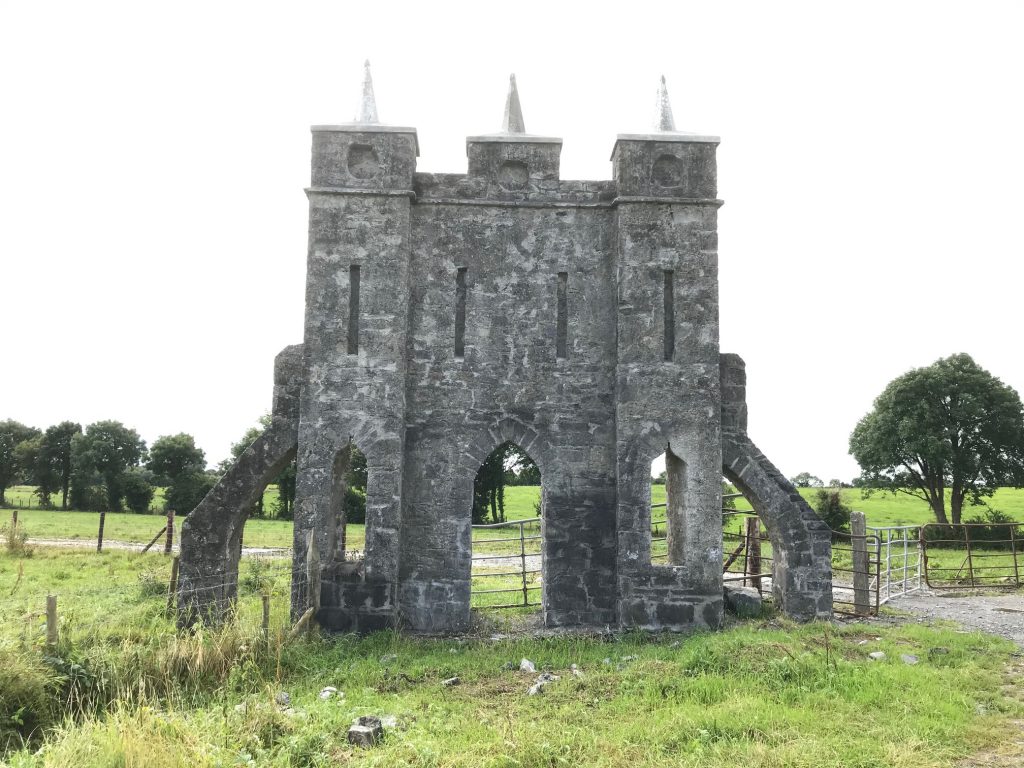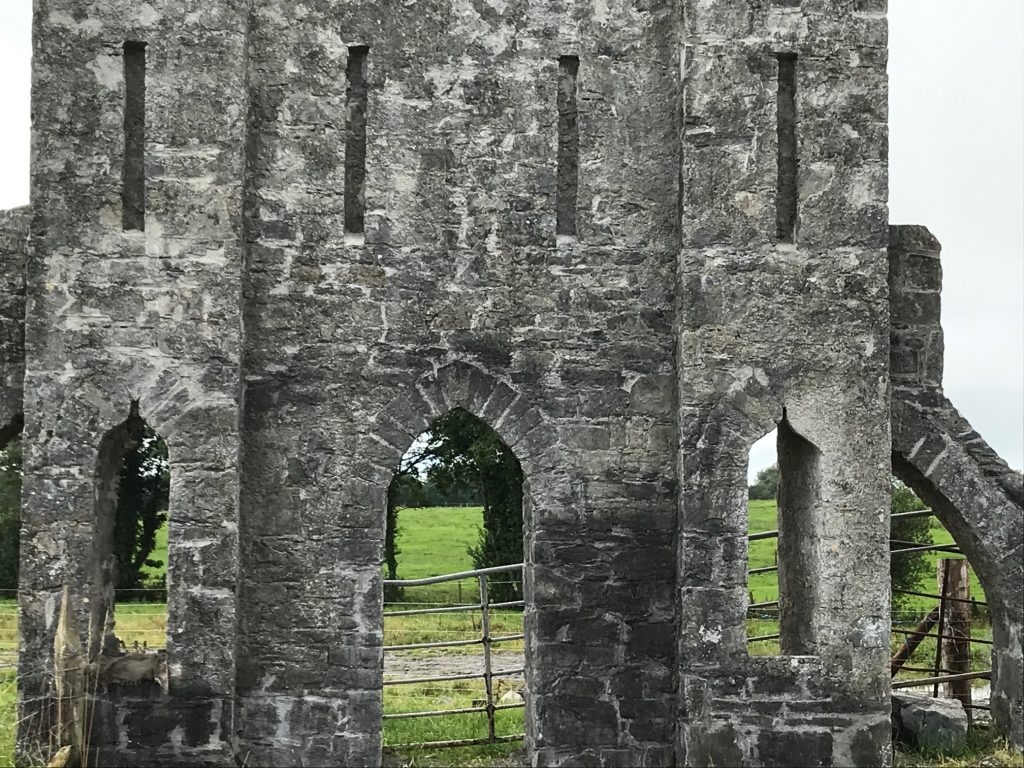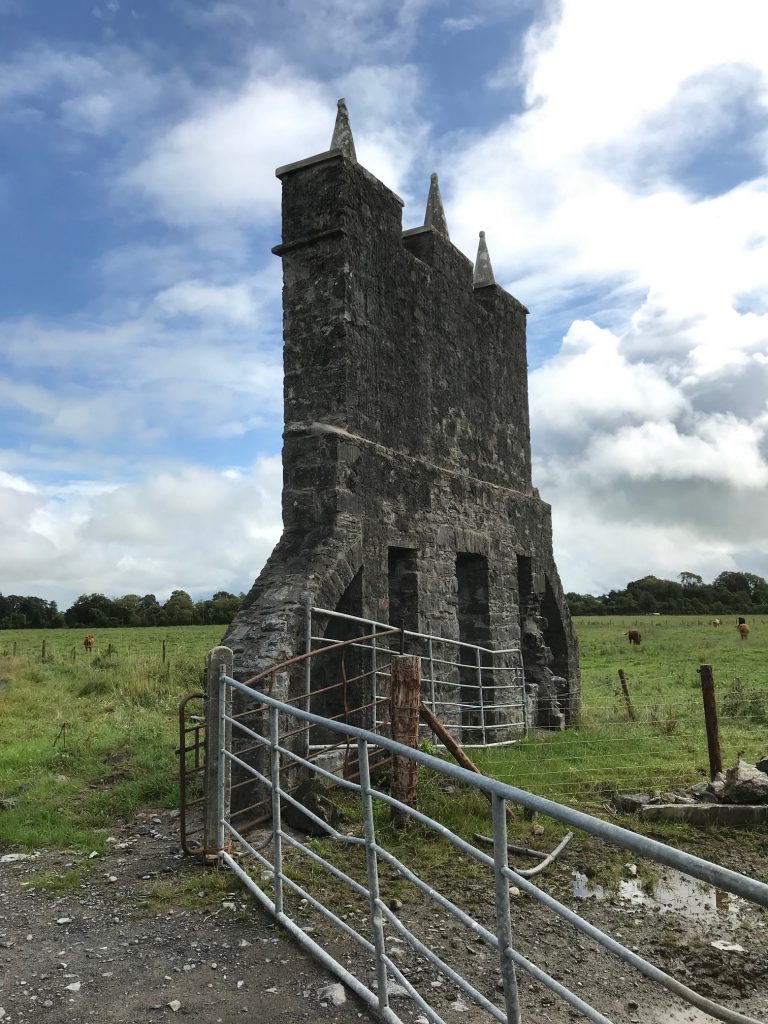Lawrencetown folly, County Galway
James Howley describes this folly as a ‘two-dimensional eyecatcher’ and points out that it has an essential characteristic of all the best follies ‘ the use of architectural elements not in the literal but the abstract sense, combined with simplicity and a judicious eye for proportion’. It is located on a sharp bend of the road outside the village ‘which provides a perfect face on approach from one direction and makes it virtually invisible from the opposite approach…..Built in neat rubble stonework, the composition comprises a central recessed bay with a pointed-arched doorway flanked by narrow piers, each with ogee window openings. At high level there is a series of slit reveals, above which runs a string-course. The tops of the piers end with a blind circular reveal and a stone pinnacle rising from a flat capping stone. The same pattern is repeated above the central doorway. To restrain the structure, delicate buttresses spring from each side, which, along with the door and window openings, create an effect of lightness.'(The Follies and Garden Buildings of Ireland p.119)
The Follies Trust advised the Lawrencetown committee on best practice for the conservation of the folly and gave a grant to undertake the work which is almost complete.



